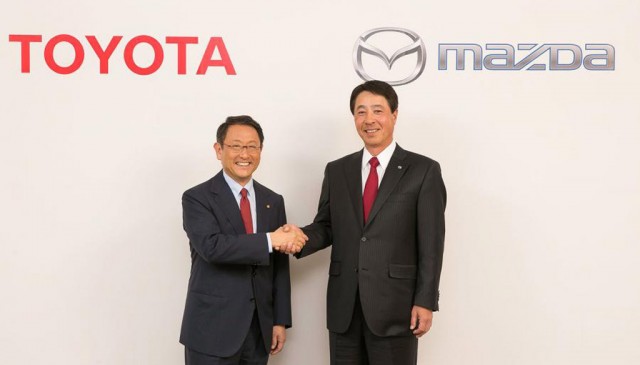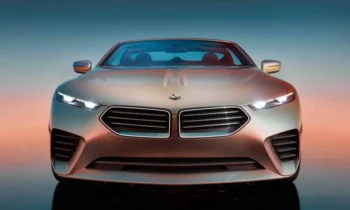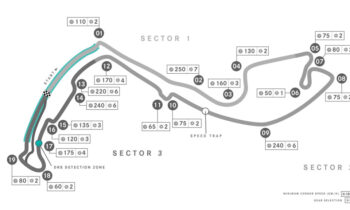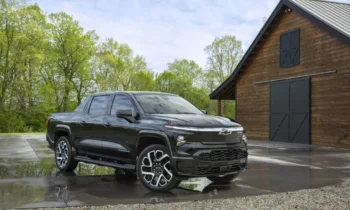Toyota is one of the largest global automakers, while Mazda is one of the smallest.
A new report suggests that the two Japanese makers are close to finalizing a capital-investment deal under which Toyota would take 5 percent of Mazda, and the smaller maker would invest in Toyota as well, and the two would set up a joint U.S. assembly plant.
Separately, the two makers are also reportedly planning to cooperate on electric-vehicle technology.
DON’T MISS: Mazda to offer electric car in 2019, maybe with range extender?
The vehicles to be produced at a shared plant—to be located in the U.S. South with output of up to 300,000 a year—are not known.
The report from Nikkei Asian Review suggests that both makers will produce crossover utility vehicles there.
Further, each maker is apparently likely to build its own products, as in the Indiana plant where Subaru built Legacys and Outbacks in one half while Toyota built Camrys in the other half. Subaru took back the whole plant two years ago.

Toyota chief Akio Toyoda (left) and Mazda chief Masamichi Kogai
Enlarge Photo
“In May 2015, Toyota and Mazda signed a memorandum of understanding to explore various areas of collaboration,” Toyota said in a statement.
That pact involved Mazda and Toyota cooperating on a technology exchange that would permit Mazda to offer partial zero-emission vehicles in 2019 or 2020 to satisfy regulatory requirements from the California Air Resources Board.
“We intend to submit a proposal to our board of directors today regarding the partnership with Mazda,” the Toyota statement continued, “however, we would like to refrain from providing further comment at this time.”
READ THIS: Mazda To Lean On Toyota For Hybrid, Fuel-Cell Expertise (May 2015)
Mazda responded to our request for information with what boiled down to a “no comment,” noting only that Mazda will hold a board meeting on Friday to “discuss matters further.”
The two makers’ compact crossover vehicles—the Toyota RAV4 and Mazda CX-5—are among their highest-selling models in North America as buyer interest in sedans wanes.
Mazda ended production in 2012 at its sole U.S. plant in Flat Rock, Michigan, and handed the plant back to its former part-owner Ford, which now builds Mustang sport coupes and convertibles there.
Toyota builds RAV4s in North America, but has suffered from production constraints as sales have risen to roughly 400,000 a year and the RAV4 has overtaken the company’s compact and mid-size sedans.
Separately, the continuing cooperation on electric cars takes a pair of companies that both lag in offering vehicles that plug in to recharge battery packs.
Toyota is significantly behind other automakers of its size—Renault Nissan Alliance, VW Group, and General Motors—and tiny Mazda has no few known plans for plug-in vehicles beyond minimal compliance with California zero-emission vehicle sales requirements in 2019 or 2020.
CHECK OUT: Toyota to offer electric car in 2020 as fuel-cell sales struggle
The two companies have collaborated already on two projects: Toyota supplied hybrid powertrain components for a Mazda 3 Hybrid version not sold in the U.S.
Mazda is also manufacturing the 2017 Toyota Yaris iA (nee Scion iA) subcompact sedan; the iA built in Mexico, for sale in North America only, is the Mazda2 sedan in the rest of the world.
The 2015 announcement by the two companies followed media reports that Mazda and Toyota had reached a deal in which the smaller company would borrow the larger company’s fuel-cell and hybrid technology for future models.
_______________________________________
Follow GreenCarReports on Facebook and Twitter.



